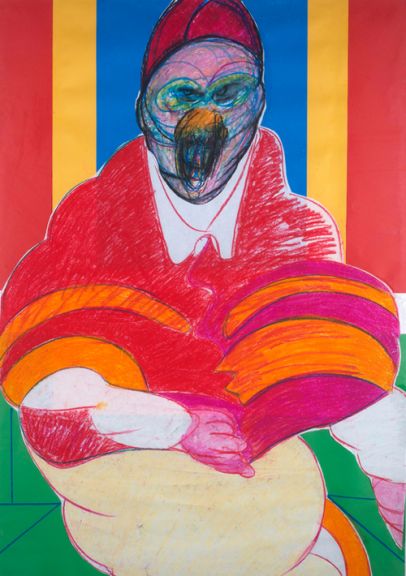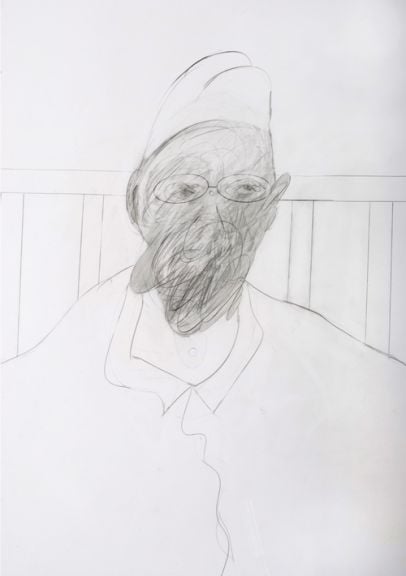Analysis
A London Gallery Is Selling Controversial Works Attributed to Francis Bacon
The artist's estate has deemed them fakes.

The artist's estate has deemed them fakes.

Amah-Rose Abrams


Drawing signed Francis Bacon
Photo: Herrick Gallery
Ten works claimed to be by Francis Bacon have gone on sale at London’s Herrick Gallery despite being rejected as fakes from the artist’s first catalogue raisonné, to be published by the artist’s estate this June.
The works in question include two pastels, priced at £795,000 ($1.1 million) each, and eight drawings on sale for a total of £1.2 million ($1.7 million), The Art Newspaper reports. The works are said to be some of an estimated 600 drawings given by Bacon to his lover Cristiano Lovatelli Ravarino between 1977 and his death in 1992.
Adding to the intrigue, although the works are owned by Ravarino they are currently in the temporary possession of David Edwards, the brother of Bacon’s late, long-term lover John Edwards.

Drawing signed Francis Bacon
Photo: Herrick Gallery
Alice Herrick, owner of the Herrick Gallery, says that although she believes that the paintings are by Bacon himself she “cannot guarantee the authenticity of the drawings and pastels,” according to TAN.
The author of the forthcoming catalogue raisonné, Martin Harrison, completely rejected the authenticity of six of the drawings already in 2012. “[These works are] pastiches, or even parodies, and profoundly disrespectful of Bacon’s authentic body of work,” he told a Cambridge court.
It is a widely held belief that Bacon never made drawings of this large scale.

Drawing signed Francis Bacon
Photo: Herrick Gallery
“The works on exhibition at the Herrick Gallery have not been authenticated and do not appear in the forthcoming Francis Bacon: Catalogue Raisonné, the official catalogue of Bacon’s oeuvre,” Harrison told TAN.

Drawing signed Francis Bacon
Photo: Herrick Gallery
The catalogue, which has been in production for a decade, will feature over 100 previously unseen canvases, some of which were recently unearthed from a private Italian collection, including the previously unknown Screaming Pope painting. Compiling the book was difficult, as Bacon is known to have destroyed many of his works.
“The stuff that has been written about Bacon, some good and much of it less good, is based on about a third of his work,” Harrison told the Guardian. “The great revelation of the new catalogue raisonné will be that, for the first time, Bacon’s entire output can be seen and assessed. It will, we believe, have a profound effect on the perception of his paintings.”
The most comprehensive catalog of Bacon’s work to date was published in 1964 by a former director of the Tate, John Rothenstein, with whom Bacon refused to cooperate.